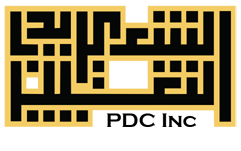The Threat of Iran’s Nuclear and ICBM Proliferation
On June 30th Iran and the P5+1 (China, France, Russia, United Kingdom, United States + Germany) will reach an agreement regarding Iran’s nuclear weapons development – so it’s supposed. The June 30th deadline is actually not the original deadline for the agreements. Iran and the...
The Situation Around Northern Raqqa – Update
Over the past few weeks, FSA and YPG forces have made significant gains into ISIS territory. The capture of Tal Abyad, a crucial border crossing into Turkey, has been hailed by many as one of the largest strategic blows to ISIS yet. The taking of...
POSSIBLE OPTIONS FOR AMERICAN POLICY AGAINST ISIS
It seems like the United States is stuck in the fight against ISIS. There is no good alternative to the current American policy, as every other option has daunting consequences. The problem is that the fight against ISIS is fought on an unconventional battleground where...
The Great Unknown
The civil war in Syria is now in its fifth year. We regularly hear of the atrocities occurring throughout the country. Barrel bombs are being dropped on innocent civilians, families are forced to flee their homes, and villages are turned to rubble on a near...
The FY16 Budget in Review, Pt. 1: Major Initiatives, Multi-Country Accounts, and Programs
With the release of the White House’s FY16 budget request, the priorities of the Obama Administration with regard to the development of democracy, governance, and human rights in the Middle East and North Africa (MENA) have come to light; naturally, development work and humanitarian aid projects are reliant upon funding in order to implement their various programs and accomplish their goals. The FY16 budget has thus given analysts much to work with and think about when it comes to deciphering the United States’ interests in the Middle East and North Africa and its commitment to furthering progress in Middle Eastern and North African society. The Project on Middle East Democracy’s annual review of the federal budget and appropriations outlines the allocations of funds to the various actors working within the MENA region to further the realization of humanitarian aims and goals. Accordingly, it reveals some significant insights into the overall nature, scope, capacity, and direction of the American effort to impart meaningful change and produce tangible progress in the status of Middle Eastern civil society, human rights, and development.
This series of blog posts utilizes the Project on Middle East Democracy’s annual review of the FY16 budget to outline the most important and significant aspects of the proposed budget for the United States’ development and humanitarian mission in the MENA region. These posts will discuss the funding and direction given to the United States’ major MENA initiatives, multi-country accounts, and programs; the status of bilateral aid and assistance to countries in the region; and the broader “bigger picture” implications of the foreign assistance and aid budget with regard to the changing nature of Middle Eastern and North African affairs and the Obama Administration’s evolving foreign policy in the Middle East. This first blog post outlines the budgetary allocations requested for the United States’ major multi-country programs – the Middle East Partnership Initiative, the USAID Middle East Regional, the Bureau of Democracy, Human Rights, and Labor at the Department of State, the Near East Regional Democracy Program, and the National Endowment for Democracy.





